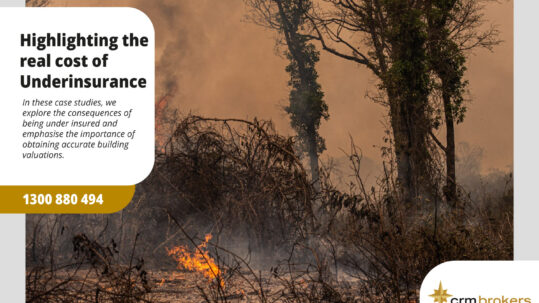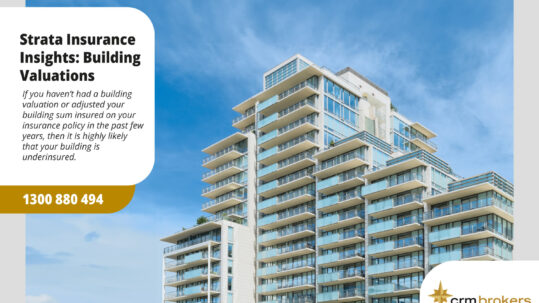
26 Sep Water Damage Can Be Avoided
Water Damage Can Be Avoided
Managing common claims and understanding the Owners Committee’s responsibility can be complex. Did you know that water damage is one of the most common causes of strata claims? Many of these claims can however be avoided with a good preventative maintenance programme.
The below extract on how to manage and reduce water damage comes from the Strata Community Insurance Toolkit where you’ll be able to access a library of resources on a number of common building and maintenance issues.
Strata buildings are complex structures with key components like water pipes, electrical wiring, air-conditioning systems, ventilation and lift systems in place.
Much of this infrastructure is hidden out of sight either in cavity walls, cupboards, roof spaces or under flooring so it does not upset the aesthetic appearance of a strata
property, apartment or lot. When something goes wrong with these components, the resultant damage increases exponentially.
Water Damage Claims
Water damage is one of the most common causes of strata insurance claims. Significant claims will have an impact on insurance premiums on renewal. The key is to minimise claims with a good maintenance/prevention regime in place both at the building and lot owner level.
Over the past three years, Strata Community Insurance paid out more than $50 million in water damage claims. Many of these claims could have been avoided with a good preventative maintenance programme. Unfortunately, the impact for the insured was a significant increase in insurance premiums compared to a small expense for preventative maintenance.
The irony is that many of the gradual water damage-related claims could have been avoided with a good preventative maintenance programme and regular verification of the working order of the key components in the strata complex and within individual apartments/lots. The chart ‘Examples of water damage’ details the key areas that should be included in a preventative maintenance programme.
Physical evidence of a water problem
The intent of strata insurance is to cover claims for water damage that is sudden and accidental. In many instances, strata insurance will cover the hidden perils of burst or leaking pipes when physical evidence of damage is first noticed and a claim is made.
Strata insurance does not cover poor maintenance where a known problem has been allowed to continue and expand over time, nor does it cover wear and tear.
Water problems may not be noticed until there is physical evidence like mould, dampness or leakages. At that stage of discovery, in our experience, the impact will be greater and, in many instances, will have spread to multiple apartments/lots and common areas.
Impact is not just payment of an insurance claim
Having a claim paid can often be the easy part. A significant impact on strata committees, owner/occupiers and tenants is the time lost after lodgement and payment of a claim and additional out-of-pocket expenses – particularly if appropriate contents insurance is not in place. Of course, this scenario does not take into account the time, effort and expense relating to:
• Phone calls, emails and time lost waiting on suppliers to turn up (or not) to quote for repairs.
• Time lost waiting on repair work to commence.
• Impact on lifestyle/living conditions of repair work, with removal of walls, ceilings, and roofs to rectify damage.
• Inability for people to remain in their home due to the extent of repair work required, especially if the apartment/lot is unfit to be occupied for a considerable length of time (3+ months living out of a suitcase).
• Electrical repairs.
• Matching/replacing paint, tiles, bathroom fittings, kitchen fittings.
• Impact of common area repairs and access to the building.
• Out-of-pocket expenses to repair and replace items not covered by insurance.
Prevention is better than the cure
A good maintenance programme and regular verification will help identify significant risk areas both seen and unseen in a strata complex. For example, key points that should be considered:
• Is the building experiencing bursting pipes?
• Is the building more than 30-years old?
• Does the water need to be filtered for drinking?
Hidden pipes may not be capable of being inspected, but can be tested. Further, water purity can be tested.
Where water pressure is a concern, strata committees should consider the installation of pressure limiting valves at the mains to reduce the water pressure going into a building. These valves will reduce the pressure on water pipes and joints, and may extend their life by up to an additional 5-7 years.
Corrosive impurities have been found in water across Australia and, over time (approximately 30–40 years), will cause even copper pipes to fail.
Apartment/lot owners also have a part to play in checking their internal fixtures and fittings, and replacing items that are showing signs of age, wear and tear. Signs of mould in areas outside of bathrooms or kitchens are a good indicator of a plumbing problem and should be investigated. Flexible hoses in bathrooms or kitchens should
be checked regularly and replaced if showing signs of degradation. Shower membranes showing signs of wear and tear should be repaired or replaced.
Examples of Water Damage
Plumbing, taps or pipes leaking – causing damage to the walls, ceilings or floors.
Flashing, tiles, shingles or deteriorating roof parts – indicating signs of needed repair.
Mould, rot or corrosion caused by long-term water seepage.
Deteriorating electrical wiring caused by water seepage.
Seepage from cracks in foundations or at the exterior of the building allowing water to enter the strata complex.
Poor repairs or lack of repairs to the strata complex
Our dedicated Strata division engages specialist strata brokers whose main function is to deal solely with all things strata. Our in-house Claims team ensures we provide accurate assessments when discussing claims and potential issues with insurers.
Should you have any insurance related enquiries, please contact us on 1300 880 494.
Stay Informed – Connect with us on LinkedIn
Important Notice
This article provides information rather than financial product or other advice. The content of this article, including any information contained in it, has been prepared without taking into account your objectives, financial situation or needs. You should consider the appropriateness of the information, taking these matters into account, before you act on any information. In particular, you should review the product disclosure statement for any product that the information relates to it before acquiring the product.
Information is current as at the date the article is written as specified within it but is subject to change. CRM Brokers make no representation as to the accuracy or completeness of the information. Various third parties have contributed to the production of this content. All information is subject to copyright and may not be reproduced without the prior written consent of CRM Brokers.
Strata Insurance Insights: The Real Cost of Underinsurance
Simply put, underinsurance occurs when the sums insured are not sufficient to co...
11 April, 2024Strata Insurance Insights: Building Valuations
While securing appropriate insurance coverage is fundamental for strata property...
14 March, 2024The Alarming Rise of Business Email Compromise and the Vital Role of Cyber Insurance
In today’s rapidly evolving cyber threat landscape, cybercriminals are con...
27 February, 2024Navigating High-Risk Tenancies and Property Insurance
When it comes to insuring properties with commercial tenants, regardless of whet...
13 February, 2024





